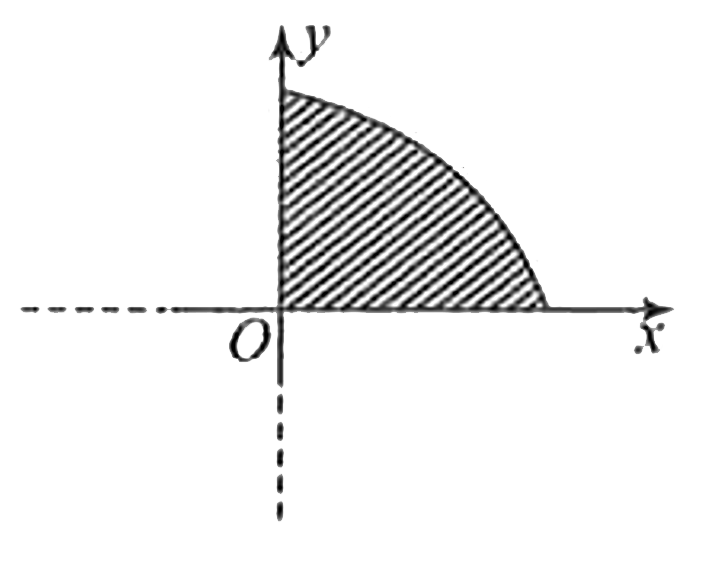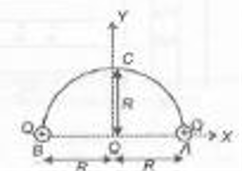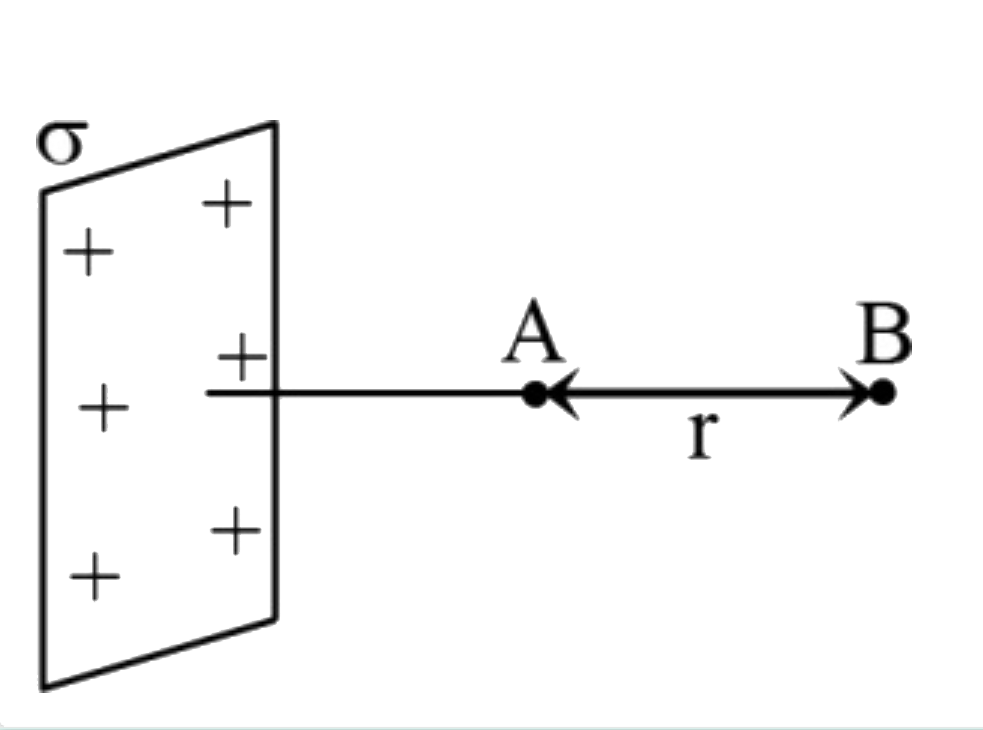An infinite thread of charge density λ lies along z-axis. The potential difference between points A(4,3,4) and (3,4,0) is

λ2π∈0In(√415)
λ2π∈0In(5)
zero
λ2π∈0
The correct Answer is:C
Equipotential surfaces are coaxial cylinders, therefore (4,3,4) and (3,4,0) lie on equipotential surface.
Similar Questions
An infinitely long line of linear charge density λ is shown in the figure. The potential difference VA−VB between the two points A and B is
 View Solution
View SolutionA uniform electric field is along x-axis. The potential difference VA−VB=10V is between two points A (2m, 3m) and (4m, 8m). Find the electric field intensity.
View SolutionThe point (-2, 3, 4) lies in
View SolutionA uniform surface charge of density σ is given to a quarter of a disc extending upto infinity in the first quadrant of x-y plane. The centre of the disc is at the origin O. Find the z-component of the electric field at the point (0,0,z) and the potential difference between the points (0,0,d) & (0,0,2d).
 View Solution
View SolutionA uniform surface charge of density σ is given to a quarter of a disc extending up to infinity in the first quadrant of x−y plane. The centre of the disc is at the origin O. Find the z-component of the electric field at the point (0,0,z) and the potential difference between the point (0,0,d) and (0,0,2d)
 View Solution
View SolutionFor an infinite line of charge having linear charge density λ lying along x-axis the work done in moving a charge q form C to A along CA is
 View Solution
View SolutionElectric field in a region is given by E=(2ˆi+3ˆj−4ˆk)V/m. Find the potential difference between points (0, 0, 0) and (1,2,3) in this region.
View SolutionTwo identical point charges are placed at A and B. The potential difference V0−VC is (k=14πε0)
 View Solution
View SolutionAn infinite conducting sheet has surface charge density σ. The distance between two points is r. The potential difference (VA−VB) between these point is
 View Solution
View SolutionFind the equation of the ellipse, with major axis along the x-axis and passing through the points (4,3)and (−1,4).
View Solution

